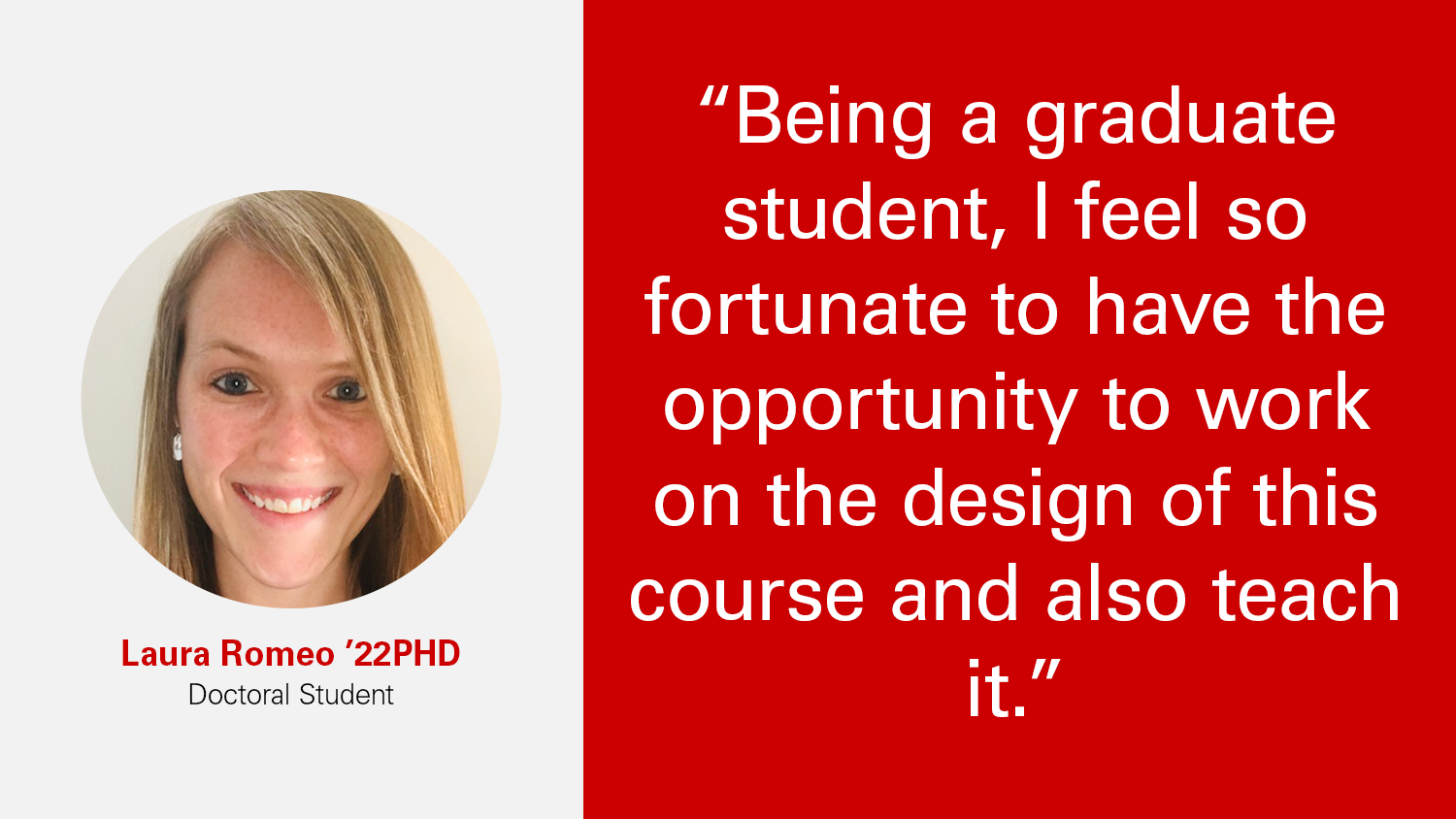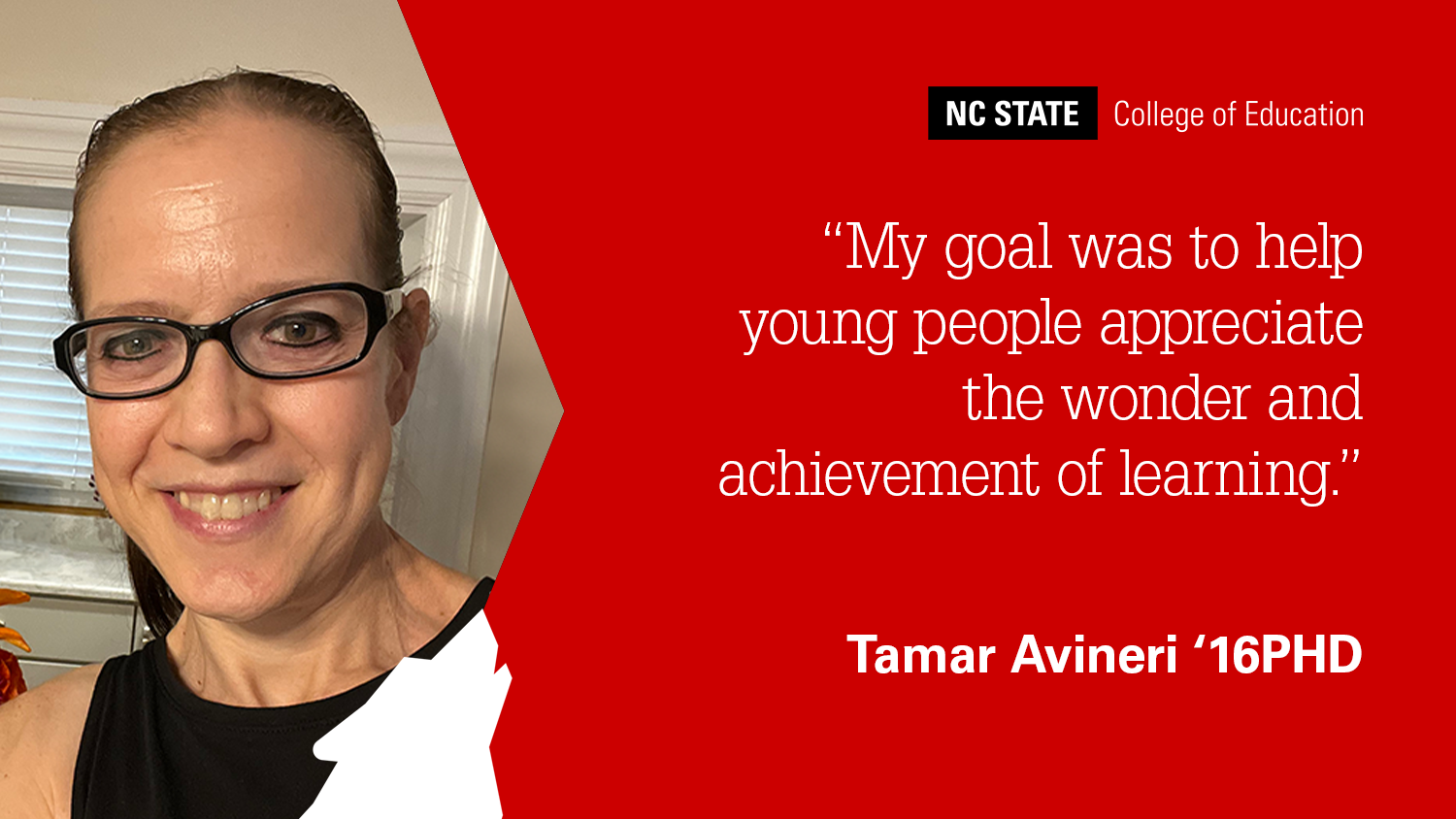‘We Need to Support Our Students to Be Well Enough, Both Physically and Mentally, to Learn:’ Doctoral Student Laura Romeo Redesigns Elementary Education Course to Focus on Educating the Whole Child

Laura Romeo ’22PHD, a doctoral student in the Ph.D. in Teacher Education and Learning Sciences’ elementary education in mathematics and science program area of study, is preparing pre-service teachers to address the needs of their students’ minds and bodies through a course she redesigned for the NC State College of Education’s undergraduate elementary education program.
Romeo, a former elementary school teacher, technology facilitator and curriculum specialist, had been working as a junior liaison for elementary education students when James Minogue, an associate professor and elementary education program coordinator, asked her to teach the ELM 450: The Arts for Elementary Education course.
Minogue told her he wanted to shift the course to focus on a more holistic approach of teaching a child. Romeo was given the opportunity to tackle the responsibility of redesigning it.
“Being a graduate student, I feel so fortunate to have the opportunity to work on the design of this course and also teach it. It’s not only given me the experience that I can base my future on, but it’s solidified my passion for this,” she said. “Just to have this opportunity from the college and the support from faculty has been amazing, and I don’t think I would have gotten that anywhere else.”
The new version of this course for seniors, which Romeo and students refer to as the “Educating the Whole Child” course, focuses on how teachers can include the arts in instruction in order to tap into childrens’ creativity, gauge their understanding of content, facilitate difficult conversations and give them different representations of learning and meaning.
At the elementary level, Romeo said, sometimes students don’t have the language to speak about what they know or feel, or they understand concepts but are unable to express their thoughts in writing. Allowing them to create some type of art project can not only help them demonstrate what they’ve learned from instruction, but can help keep them engaged and motivated to participate because they are able to express themselves in a way that is meaningful to them, she said.
“I plan to use what I have learned about arts integration as a form of expression and communication in my future classroom,” said Kate Wehrheim ’22, a student in the elementary education program. “I feel that multiple forms of art, such as dance, drawing, singing and theater provide students with the opportunity to not only better engage in their learning, but also to express themselves.”
The course Romeo redesigned extends beyond just the use of arts in the classroom, however, and focuses heavily on what it means to teach the whole child—making sure students are supported, challenged and have a safe learning environment to come to each day.
The course includes a social-emotional component that helps pre-service teachers understand the signs they need to identify and the strategies they can implement to help students manage emotions and work on social skills, which Romeo says has been particularly important this year as students return to in-person classes after a year of online learning.
To help pre-service teachers in this effort, the course incorporates youth mental health training and certification. Knowing that resources and counselors are limited at schools, Romeo said the trainer helps her students understand how to have difficult conversations in a way that doesn’t make students feel targeted and continues to build the student-teacher relationship.
The semester ends with a focus on trauma-informed teaching and learning to help pre-service teachers understand key things to look for to help students that are actively going through or have experienced trauma, and create a safe space for them.
“It helps them identify the needs that students might have, whether or not the student themselves even knows, and the resources that they either have access to or need to go find to help their student be supported in whatever mental capacity that they might need,” Romeo said. “Students come from all different backgrounds, from all different walks of life with their home lives. We need to support our students to be well enough, both physically and mentally, to learn.”
In addition to teaching pre-service educators how to address the social-emotional needs of their young students, Romeo’s redesign of the course also includes a component that focuses on the social and emotional needs of the teachers.
Seniors in the “Educating the Whole Child” course complete a self-evaluation of their social and emotional status and reflect on how that affects them as an educator, Romeo said. Once students have used this assessment to identify their strengths and challenge areas, they select one area they want to improve upon during their field placements or student teaching and implement strategies to do so.
The goal, Romeo said, is to not only encourage teachers to work on their own social-emotional well-being, but to enable them to talk to their students about challenges and difficult conversations with a personal perspective.
“I’ve become a better self-monitor of whether or not I am meeting the needs of my students,” said elementary education student Morgan Whitt ‘22. “Many of the lessons in this course have been centered around topics that are difficult to discuss but are important to spend time talking about. I will use these topics as discussion points in my future classroom as well as when I’m lesson planning. It’s important that we spend time discussing tough topics to ensure that we are progressing forward as a society.”
- Categories:


